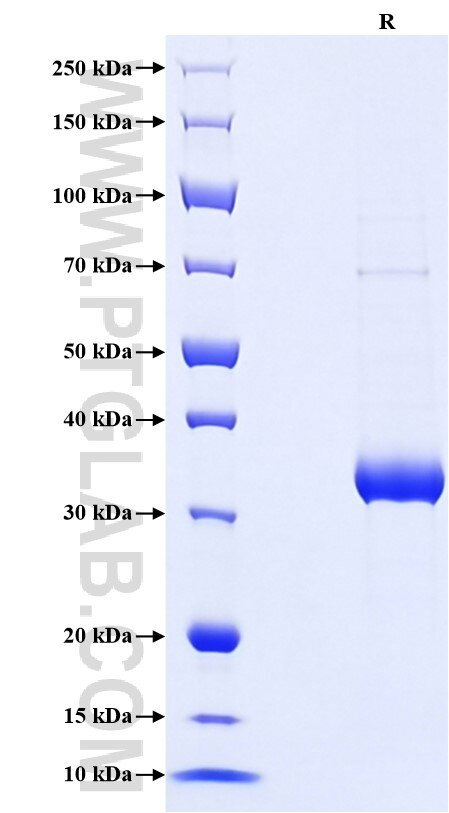Recombinant Human INS protein (hFc Tag)
Species
Human
Purity
>90 %, SDS-PAGE
Tag
hFc Tag
Activity
not tested
Cat no : Eg0332
Validation Data Gallery
Product Information
| Purity | >90 %, SDS-PAGE |
| Endotoxin | <0.1 EU/μg protein, LAL method |
| Activity |
Not tested |
| Expression | HEK293-derived Human INS protein Phe25-Thr54(Insulin B chain) +linker+Gly90-Asn110(Insulin A chain) (Accession# P01308-1) with a human IgG1 Fc tag at the C-terminus. |
| GeneID | 3630 |
| Accession | P01308-1 |
| PredictedSize | 32.1 kDa |
| SDS-PAGE | 32-36 kDa, reducing (R) conditions |
| Formulation | Lyophilized from 0.22 μm filtered solution in PBS, pH 7.4. Normally 5% trehalose and 5% mannitol are added as protectants before lyophilization. |
| Reconstitution | Briefly centrifuge the tube before opening. Reconstitute at 0.1-0.5 mg/mL in sterile water. |
| Storage Conditions |
It is recommended that the protein be aliquoted for optimal storage. Avoid repeated freeze-thaw cycles.
|
| Shipping | The product is shipped at ambient temperature. Upon receipt, store it immediately at the recommended temperature. |
Background
Insulin is a peptide hormone, produced by beta cells of the pancreas, and is central to regulating carbohydrate and fat metabolism in the body. It participates in glucose utilization, protein synthesis and in the formation and storage of neutral lipids. Insulin is synthesized as a precursor molecule, proinsulin, which is processed prior to secretion. A- and B-peptides are joined together by a disulfide bond to form insulin, while the central portion of the precursor molecule is cleaved and released as the C-peptide. Defects in insulin results in type 1 diabetes mellitus.
References:
1.Straub SG. et al. (2002). Diabetes Metab Res Rev. 18: 451-63. 2. Heath WF. et al. (1992). J Biol Chem. 267: 419-25. 3. Concannon, P. et al. (1998). Nat. Genet. 19: 292-296.
